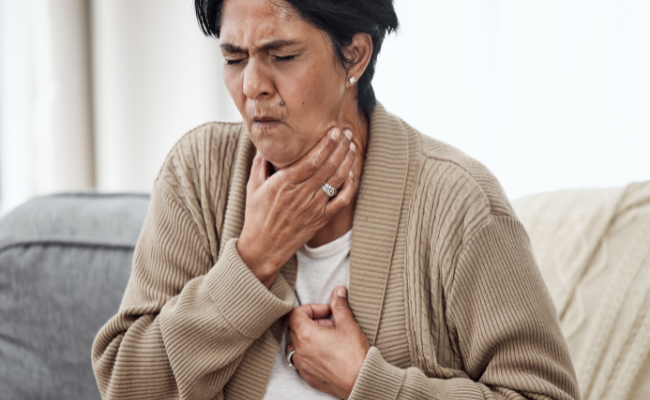How to Treat Inhaled A Bug?
- September 28, 2023
- No Comments

What to Do When You've Inhaled a Bug?
Inhaling a bug can be a disconcerting and uncomfortable experience. Whether it's a tiny gnat or a larger insect, it's essential to know what to do when you find yourself in this situation. In this article, we'll explore what to do when you've inhaled a bug, why it can happen, how to handle it, available treatment solutions, and the benefits of taking the right steps promptly.
What Happens When You Inhale a Bug?
Inhaling a bug can be startling and unpleasant, causing immediate discomfort. Common symptoms and sensations when you've inhaled a bug include:
- Coughing and Throat Irritation: The bug's presence in your airway can trigger coughing as your body's natural response to remove the foreign object.
- Feeling Stuck: You might feel as though the bug is lodged in your throat or airway, causing discomfort and anxiety.
- Swallowing Difficulty: Depending on the bug's size, you may experience difficulty swallowing, which can be distressing.
- Tickling or Itching Sensation: The bug's movement or presence can lead to a tickling or itching sensation in your throat or airway.
Why Does Inhaling a Bug Happen?
Inhaling a bug can occur for various reasons:
- Outdoor Activities: People who spend time outdoors, especially in areas with flying insects, are at higher risk of inhaling bugs.
- Breathing Patterns: Vigorous physical activities like running or cycling can lead to rapid and deep breathing, increasing the chances of inhaling bugs.
- Insect Size: Smaller insects like gnats or mosquitoes are more likely to be inhaled due to their size and ability to fly into your path.
- Wind Conditions: Windy conditions can carry bugs into your path, making it more likely for them to be inhaled.
How to Handle Inhaling a Bug?
If you've inhaled a bug, follow these steps to handle the situation:
- Stay Calm: It's essential to remain calm to prevent panic, which can exacerbate the situation.
- Cough Gently: Coughing is your body's natural reflex to remove the bug. Cough gently to try and dislodge it.
- Sip Water: Taking small sips of water can help wash down the bug and alleviate discomfort.
- Seek Medical Attention if Necessary: If you experience severe symptoms, persistent discomfort, or difficulty breathing, seek immediate medical assistance.
Identifying the Bug Matters
- When you've inhaled a bug, it can be helpful to identify what type of bug it is, especially if you have known allergies. For example, if you've inhaled a bee and you are allergic to bee stings, it's crucial to act swiftly. In such cases, it's recommended to head straight to the emergency room in a hospital for immediate medical attention and potential administration of epinephrine.
- The majority of bugs that people inhale are small in size. Fortunately, small bugs tend to get trapped in the mucous lining of your respiratory tract and are eventually expelled. Your body's natural mechanisms, such as coughing and mucous production, work together to rid your airways of these intruders. In most cases, you'll experience minor discomfort and irritation, but the bug will likely be cleared from your system without the need for extensive medical intervention.
Treatment Solutions
Treatment for inhaling a bug is usually straightforward and depends on the bug's size and the severity of symptoms:
- Self-Care: In most cases, the bug will be coughed up or swallowed harmlessly. Drinking water and soothing throat lozenges can provide relief.
- Medical Examination: If you continue to experience significant discomfort, pain, or breathing difficulties, it's advisable to consult a healthcare professional. They may perform a physical examination or imaging tests to ensure the bug hasn't caused any complications.
- Treatment for Allergic Reactions: If you have an allergy to the inhaled bug, such as a bee or wasp sting, you may require immediate treatment for allergic reactions. This could involve an epinephrine injection and antihistamines.
Benefits of Promptly Addressing Inhaled Bugs
Addressing the situation promptly offers several benefits:
- Relief from Discomfort: Prompt action helps alleviate discomfort and irritation caused by the inhaled bug.
- Prevention of Complications: Early intervention can prevent complications, such as infection or inflammation, especially if the bug has caused minor injuries to your airway.
- Peace of Mind: Seeking medical attention if necessary provides peace of mind, ensuring there are no underlying issues or complications.
- Allergy Management: Identifying and treating allergic reactions promptly is crucial to prevent severe allergic responses.
- Educational Value: Learning how to handle such situations can be valuable for future incidents and can help you stay calm in similar scenarios.
Comments (0)